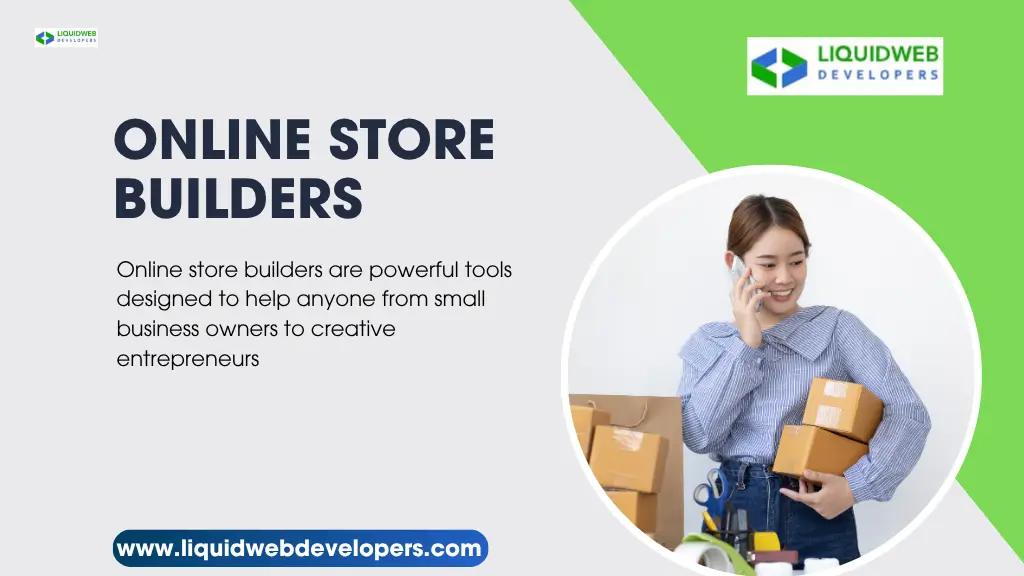How to Choose the Best Online Store Builder in 2025 (No-Nonsense Guide)

Introduction: Online Selling Isn’t Optional Anymore
You’ve got the idea, the drive, and maybe even the products. What’s missing? A powerful, reliable online store builder that turns your vision into a real, profitable brand. In 2025, launching an e-commerce site doesn’t require developers or huge budgets—but it does require the right platform. This guide cuts the guesswork out and gives you a no-nonsense path to choosing a builder that fits your goals.
Whether you’re selling handmade items or building a tech brand, it all starts here. Because success online isn’t about luck—it’s about smart decisions, and this is your first one.
What Makes an Online Store Builder Actually Worth Using?
Not all store builders are created equal—some are loaded with features but feel clunky; others are beginner-friendly but painfully limited. Here’s how to filter out the fluff:
1. Ease of Launch
Don’t fall for buzzwords. If a platform doesn’t let you build your site in real-time—previewing edits instantly—it’s not worth the effort. The best tools feel intuitive the moment you touch them.
2. Let SEO Work for You, Not Against You
Ever launched a website that nobody saw? That’s what bad SEO feels like. Your platform should make discoverability effortless—giving you tools to edit titles, tweak image tags, and create search engine-friendly pages that actually show up where customers are looking.
3. Adding Products Shouldn’t Break Your Brain
Whether it’s mugs, music, or mini-courses, loading your shop with items should be smooth. The right builder lets you write engaging product descriptions, add different versions of a product, and track what’s in stock — all without reading a manual.
4. Payment That Just Works
Want to accept payments worldwide? You’ll need integrations with Stripe, PayPal, wallets, and cards. A great builder doesn’t make you beg for these—they’re baked in.
5. Looks Matter (Sorry, But They Do)
Customers will ignore your shop if it really seems to have been crafted in 2011. The right tool delivers you stunning, customizable frameworks without the need to touch a single line of code.
6. Custom Branding with Your Own Domain Name
This isn’t negotiable. You need a custom domain name to build credibility. If the builder makes that step complicated, run.
2025’s Top Online Store Builder (Ranked Differently)
Here’s the twist—instead of just comparing “features,” let’s pair each tool with the type of person it’s perfect for.
Shopify—For the Person Who Treats This Like a Real Business
Best if: You want to grow big, fast
Why it wins: Deep integrations, massive app store, multi-currency support
Watch out for: Extra fees if you don’t use Shopify Payments
It’s not the cheapest, but if you’re in this to win, Shopify gives you the tools serious sellers rely on.
Wix e-commerce—For Creators Who Want Control Without Complexity
Best if: You hate tech but love design
Why it wins: Beautiful templates, super friendly UI
Weak point: Not ideal for massive catalogs
If you’re a maker, coach, or artist, Wix feels like designing a vision board that sells stuff.
BigCommerce—For Sellers Scaling Beyond “Side Hustle”
Best if: You already have traction and need more muscle
Why it wins: Powerful SEO, no added transaction fees
Weakness: Slightly steeper learning curve
Think of BigCommerce as Shopify’s analytical cousin. Less flashy, more operational depth.
Squarespace—For Visual Brands and Digital Products
Best if: Your product is the brand
Why it wins: Minimalist design, seamless content + store setup
Limitation: Not built for large inventories
Photographers, course creators, and lifestyle influencers love Squarespace for a reason.
WooCommerce—For Control Freaks (In the Best Way)
Best if: You know WordPress and want total flexibility
Why it wins: Endless customization, massive plugin library
Heads-up: You’re responsible for hosting, updates, and security
WooCommerce is like building your own restaurant instead of renting a food truck. It’s powerful—if you know how to use it.
Why People Choose Store Builders (and Not Custom Code)
Let’s clear something up. Yes, custom development gives you unlimited options—but it also gives you unlimited headaches.
| Feature | Online Store Builder | Custom Development |
| Cost | Monthly plan, some with a free trial | $$$ upfront, ongoing dev costs |
| Setup Time | 1–3 days | 3–6 weeks minimum |
| Flexibility | Enough for most sellers | Unlimited, but complex |
| Technical Barrier | Low | High |
| Who It’s For | Solopreneurs, small business owners | Enterprises, SaaS, niche systems |
Unless you’re building the next Amazon, a solid online store builder is your best bet—especially in 2025, when speed and adaptability win.
How to Launch Your Store (Without Getting Overwhelmed)
Here’s a simplified playbook:
-
Pick Your Platform
Start with a free trial. Play around. Test templates. See if it “clicks.”
-
Choose a Template
Select the one that fits your brand, and then change the fonts, layout, and images.
-
Add Your Products
Upload images, pricing, variants, and unique product descriptions. Add tags and organize by category.
-
Set Up Payments & Shipping
Connect your gateways, and decide how you’ll ship—or if you’re delivering digital products, make sure they’re protected and downloadable.
-
Connect a Custom Domain Name
Your URL should reflect your brand. Avoid “.myshop.com”—it’s unprofessional.
-
Launch (But Keep Tweaking)
Press publish, then review. Set up analytics. Ask a friend to order and test everything.
SEO Tips That Aren’t Just Copy-Paste Advice.
Most guides throw basic SEO tips at you. Here’s what actually helps your store show up in search engines:
- Use clear, keyword-driven page titles—no jargon
- Don’t duplicate product descriptions—make each one helpful and unique
- Optimize images for speed and include alt text
- Start blogging (seriously)—it’s still one of the best traffic strategies
- Submit your sitemap and connect to Google tools
- Use the builder’s built-in SEO tools to tweak, test, and improve continuously
Good SEO isn’t about doing everything—it’s about doing the basics better than your competitors.
Final Thoughts: There’s No “Perfect” Builder—Only the Right One for You
Choosing the right online store builder is less about the flash and more about the fit. Go for stability, ease of use, and a setup that reflects where you’re headed — not just where you are.
Ask yourself:
- Do I need something simple or scalable?
- Do I want visual beauty or backend power?
- Am I selling services, goods, or digital products?
- Do I need strong SEO tools, or will I focus on ads/social?
Start with a free trial, build a demo version, and follow your gut. The internet doesn’t wait—and neither should your store.
FAQs (Zero-Fluff Edition)
Q: Is a custom domain name necessary?
Yes. If you’re serious about your brand, own your name. Period.
Q: Can I switch builders later?
Possible? Yes. Easy? Not really. Pick something that grows with you.
Q: Are SEO features built in?
Most builders now include essential SEO tools—but how you use them is what counts.
Q: Can I sell both physical and digital products?
Absolutely. Just check what file types and sizes are supported before uploading.
